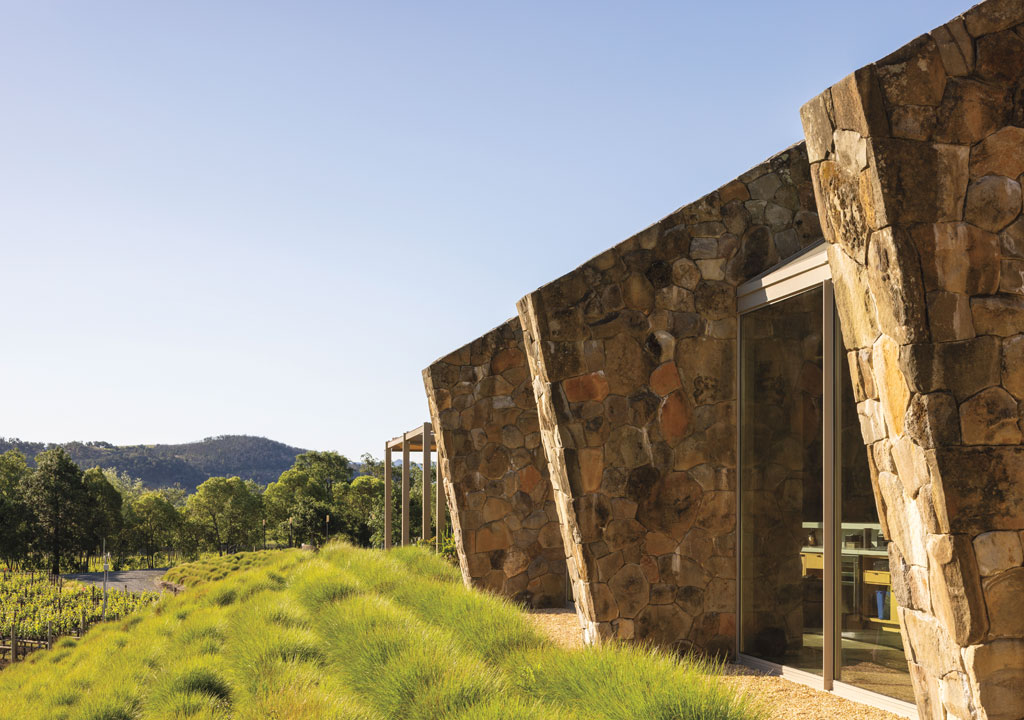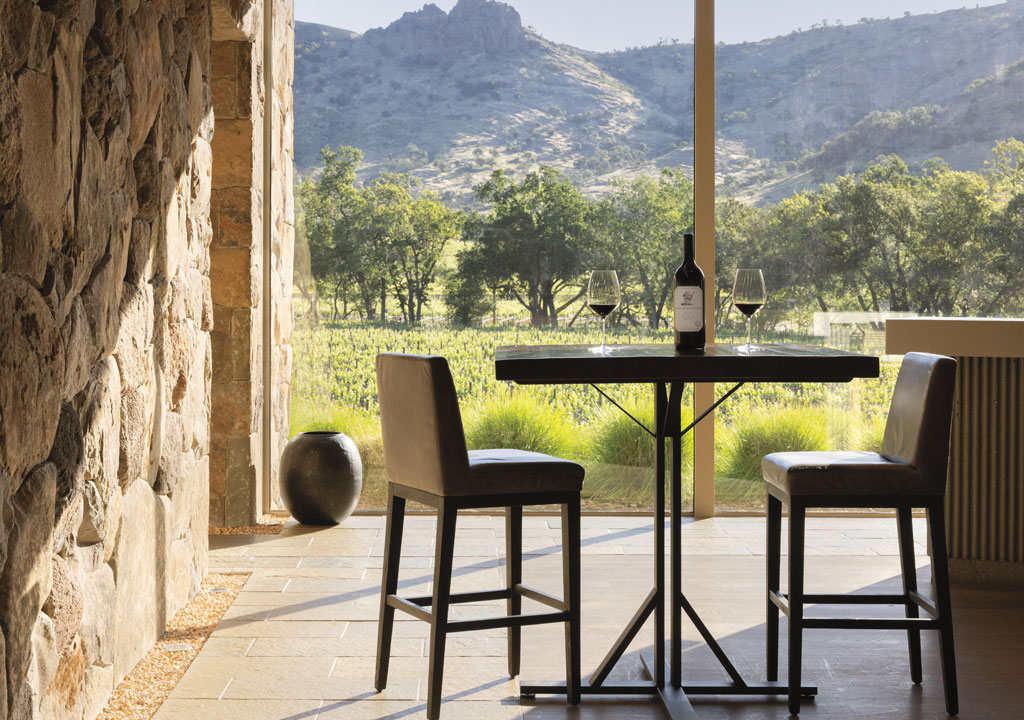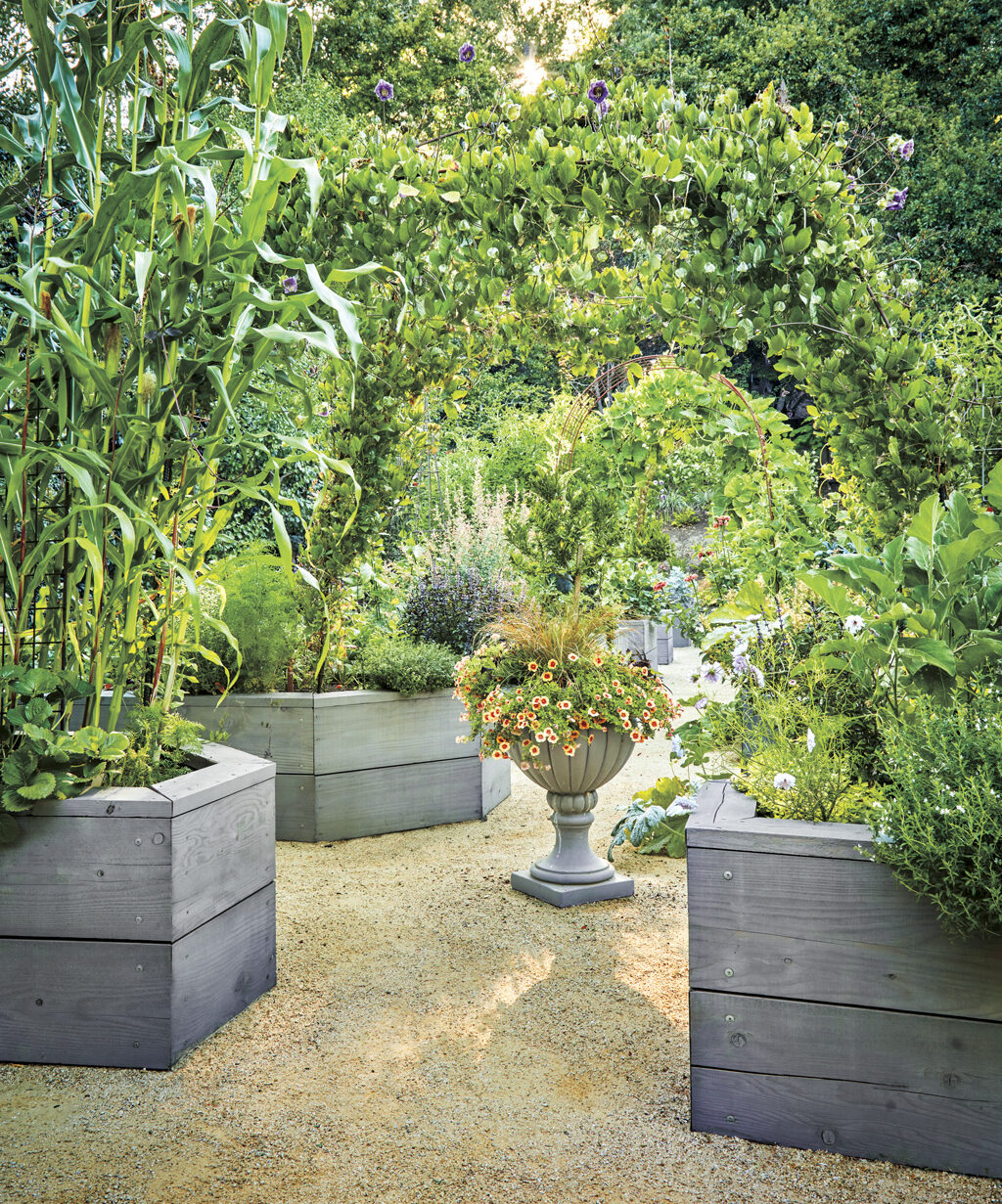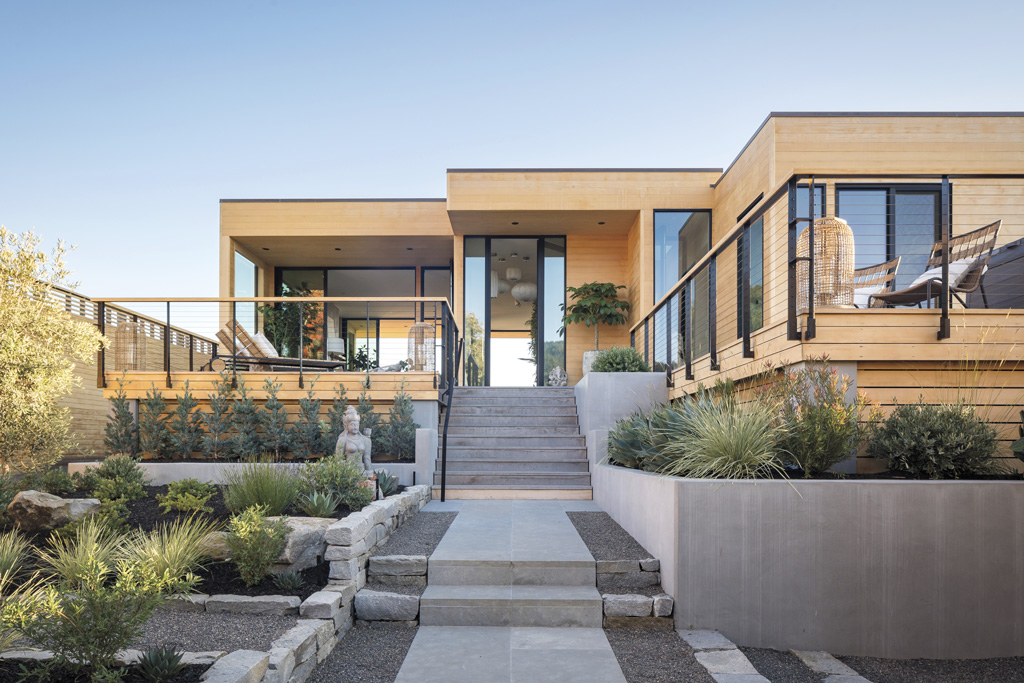Emerging from two years of cocooned existence, the explorers among us are heading straight for bucket list trips abroad. Here’s an easier way to unfurl the wings and take flight: a visit to Stag’s Leap Wine Cellars, a history-making winery with top-notch sips and top-flight architecture to dazzle the senses.
In contrast to the inwardly focused tasting rooms at the castles, châteaus and farm-chic wineries dotting Napa and Sonoma valleys, the experience at Stag’s Leap Wine Cellars is about the land and the legend influencing the libations at hand. The winery, founded by Warren Winiarski 50 years ago, put California on the international map when its cabernet defeated the top Bordeaux wineries in a blind tasting at the Judgment of Paris in 1976. Winiarski, who won the Smithsonian Institution’s James Smithson Bicentennial Medal in 2019 for contributions to American history, has created another international gem with the winery’s visitor center and tasting room, a marvel designed by one of the globe’s foremost experts in integrative architecture.
The idea was that the building and land would unite. It was Javier Barba, founder and CEO of BC Estudio Architects in Barcelona, who brought it into form. He’d been enlisted years earlier, in the 1990s, for a major project at Stag’s Leap Wine Cellars that integrated the caves into the landscape, after Winiarski saw an example of his work in the pages of Architectural Digest — a stunning project that blended a hidden quarry into a hillside swimming pool and pavilion project for a British banker on Corfu, Greece.
For the winery’s subsequent visitor center and tasting room project, Barba designed a 6,000-square-foot building that appears to grow out of the ground. Diagonal stone walls purposely mirror the rocky outcroppings of Stags Leap ridge, for which the winery is named. Interior stone walls exude an Old World vibe, while modern, floor-to-ceiling glass windows anchor the building in the present and flood it with natural light.
While sipping, guests take in a vineyard view that’s specifically oriented toward the ridge where, legend has it, the native Wappo Indians watched a stag leap across a V-shaped niche on the mountain. The FAY Outlook & Visitor Center (named for pioneering cabernet grape grower Nathan Fay) was brought to reality by Daniel Macdonald AIA Architects of Novato. Barba sketched ideas on a flight to San Francisco, his drawings driven by the idea that “it needed to be integrated with the rocks of Stags Leap, it needed to be powerful architectonically, and it needed to be functional, rational and emotional.”
Although fully planned in 2002, the visitor center was not completed until 2014. In the intervening years, Winiarski sold Stag’s Leap Wine Cellars in 2007 to a partnership between Marchesi Antinori and Ste. Michelle Wine Estates. Like all things that look simple, the visitor center was actually “very difficult,” says Macdonald, who worked in tandem with contractor Rudolph and Sletten, Sandra Reed of ZAC Landscape Architects, and Barba, who made regular site visits. The building contains $400,000 worth of glass — 14 insulated windows, the largest of which are 12 feet by 10 feet each — trucked in over the Rockies and installed by crane. Instead of large pieces of steel holding the windows together, structural engineers created the thinnest supports possible to avoid marring the view. Similarly, special steel supports were made to anchor the glass to the walls so that the glass “almost disappears into the stone,” Macdonald says.
Meanwhile, stonemasons sifted through piles of rubble on the property, leftovers from the tunneling, to find rocks suitable for the walls. They made no cuts, and no mortar is visible, an example of “fantastic masonry,” says Macdonald. Redwood walls and custom lighting add a warm ambience. But cork flooring and a fireplace, for coziness, were vetoed — not for looks, but because their aromas might interfere with wine tasting. A new display case with the original letter and scoring sheets from the Judgment of Paris was mounted on a wall in 2016 and an outdoor tasting area was added in 2017.
The stirring of emotions and intellect adds an intangible dimension to the winery’s tactile Celestial Tour & Tasting, with pours of three estate-grown cabernet sauvignons: FAY, S.L.V. and the flagship CASK 23 and bites by chef Travis Westrope ($125 per person, by reservation only).
“It’s almost as if the whole story is there in front of you while you are tasting,” winemaker Marcus Notaro says. “The rock where the legendary stag ‘leaped,’ the rocks themselves that radiate heat back into our little valley during the early afternoon, the cool winds that pick up in the late afternoon or the fog in the morning burning off, these are the real elements of our terroir that allow us to grow world-class grapes that you can see right outside.”
In the weaving of history and geology, of weather and winemaking, Barba wants guests to feel if not cocooned, then embraced. “The important thing,” Barba says, “is that when people arrive, they are conducted from the door in a smooth and gentle way and they see the top of this magic mountain, and this creates something that makes them taste the wine in a very gentle, emotional, beautiful way.”











